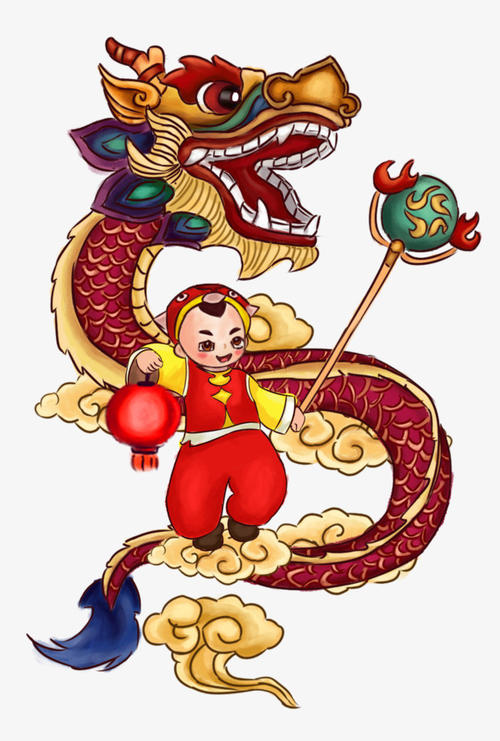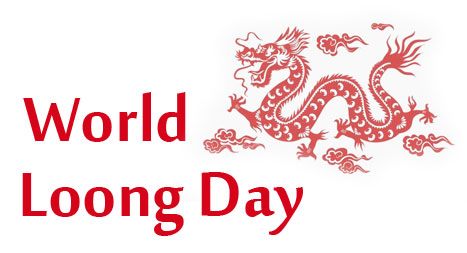

返回首页 《译龙风云——文化负载词的翻译:争议及研究》全文免费下载 |
|
An Open Letter to UNESCO: A Proposal for Establishing "World Loong Day" The United Nations Educational, Scientific and Cultural Organization The "Loong Festival" falls on the second day of the second month of the Chinese lunar calendar. This is a date that each year in the Gregorian calendar, falls between February and March. We are writing to your organization to suggest that a festival, be created as “World Loong Day”, similar to other world festivals such as "World Environment Day", "World Population Day" and "World Water Day", etc. |

Loong is a deity created by the Chinese nation to represent the integration of many animals and miraculous phenomena in nature. Its essence is the perception, cognition and deification of the universe's natural forces. Most Chinese people worship and love Loong, and regard Loong as the spiritual and cultural symbol of the nation. They consider themselves as the "descendants of Loong". For thousands of years, "Loong Head Festival", also known as "Spring Loong Festival" and so on, has been a day to worship the God of Loong. A folk song says: "On the second day of the second month of the Chinese lunar calendar, the God of Loong heads up. Big granaries will be full, small granaries will be fuller." China is one of the most populous nations in the world. The Chinese nation loves and worships Loong. Furthermore, there are more than 60 million Chinese living in nearly 200 countries and regions around the world. The Chinese have spread their love of Loong and Loong culture to all parts of the world. Customs of Loong worship include Loong dancing, and Loong boat racing. Loong culture has been spread worldwide. UNESCO is the specialized agency of the United Nations with the largest membership in the fields of international education, science and culture. Its purpose is to promote cooperation, peace and security among nations through education, science and cultural understanding. The creation of a "World Loong Day" is in line with such a purpose. Chinese Loong culture has developed for at least eight thousand years. This culture implies inclusiveness, tolerance, harmony, blessings and forging ahead. These spiritual connotations are consistent with our interdependent global values of common interests, sustainable development, and of global governance. |

At present, the entire human race is part of a diverse and complex international community consisting of multipolarization, economic globalization, cultural pluralism and conflicting information. The people of the global village can only unite and cooperate so as to meet the serious challenges to human survival posed by epidemic diseases, food insecurity, resource shortages, climate change, cyber attacks, population explosion, environmental pollution, transnational crime, refugee flows and religious conflicts. The people of the global village will carry out various positive and beneficial activities in the name of "World Loong Day". This special day will help carry forward the Loong's spirit of "inclusion, blessing, harmony and forging ahead" and strengthen global unity and cooperation to meet the above-mentioned challenges. From the perspective of cultural exchanges and the sharing of positive cultural resources, this can be described as "Chinese beauty makes the world beautiful, and the world shares different nations' beauty". Loong at one time was mistaken for a "(Chinese) dragon". What needs to be explained is, there are significant differences in essence, function and image between "Loong" in Chinese culture and "dragon" in Western culture. In Chinese culture, Loong is an auspicious god or mascot with a lofty status. Loong represents goodness and beauty. What it contributes to the world is basically a blessing and a constructive positive energy. Dragon in western culture has a low status. It is a monster, a demon, and also a symbol of ferocity, war and terror. On the whole, it represents evil and ugliness, providing mankind with basically a disastrous, and destructive, negative energy. It is something object to be feared, to be suppressed, and to be killed. Visually, a dragon has a small head, a sharp mouth, hard scales with spines, and it has huge bat-like wings. On the other hand, a Loong has a big head, a wide mouth, a thick and small belly, and smooth and soft scales. Visually, a Loong is handsome and beautiful while a dragon is hideous and ugly. Therefore, the day should be called "World Loong Day", not "World Dragon Day". |

This proposal is humbly forwarded to the United Nations Educational, Scientific and Cultural Organization. Proponents' signature (in no particular order): Pang Jin (Shaanxi, China), Huang Ji (Shanghai, China), Wang Wei (Gansu, China), Huang Yisu (Hunan, China), Zha Dongshan (Hubei, China), Long Qianshi (Beijing, China), Long Muhua (Toronto, Canada), Liu Suian (Toronto, Canada), Yu Fang (Xi'an, China), Tian Yuchuan (Beijing, China), Zhao Chenyu (Toronto, Canada), Wang Zehua (Beijing, China), Zhang Bo (Xi'an, China), Liu Wenge (Xi'an, China), Chen Zhongning (Ningxia, China), Ma Kemu (Xi'an, China), Li Wanguang (Beijing, China), Tao Xinguo (Yunnan, China). March 10,2021 (庞进撰文,王伟翻译,Jack Wynberg 英文编辑; 黄佶编辑配图,2021年3月11日) -------------------------- (返回顶部) |
返回首页 《译龙风云——文化负载词的翻译:争议及研究》全文免费下载 |